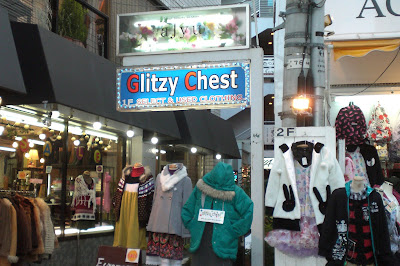

However, mixed among the old and new, the religious and the commercial, are two very unique scenes. Historically, Harajuku has been a center for teenage rebellion.


Yes, as a matter of fact, I do support Taiwan for admission into the U.N., but I'm not sure why you need a horse-head mask to talk about it...

Tokyo youth gather here in all varieties of costumes and gaze out as everyone else gazes in. It's consistently the best place to people watch...and get a "Free Hug".



Goths and Dolls roam the main intersections off the train station.


Starving artists sell their work on the street.


Musicians play, both for money...

...and in the case of what I can only call the Bono of Tokyo, some sing just because of the unquenchable passion within (for the record, I'm not saying any of that with a straight face).

...but you don't have to take my word for it. Hearing really is believing...
And then there's this...

I'm standing there, watching this, and I'm wondering to myself, what are the odds that I would travel to Tokyo, Japan, immerse myself in their culture, and suddenly be transported back to the set of Grease?

Better question, what are the odds I'd see the Japanese equivilent of John Travolta getting out of his pink Cadillac?

There are also tons of specialty boutiques, thrift stores, places to buy all the Engrish clothing you ever hope to need (Engrish, as I'm sure I'll have plenty of chances to write about, are objects that "lose something" in the translation. Cool for them, hilarious for us. It's really a win-win.).
Stores like Nudy Boy...


and Sexy Dynamite...

and of course, Glitzy Chest...


And, as usual in any place in Tokyo, there are lots and lots of people...



And, on a side note, since you're probably wondering how Tokyo remains one of the cleanest cities despite being the world's largest metropolis, the answer is simple: these people are obsessed with their trash. Your eyes are not deceiving you, there are 4 trash cans there, each with a unique set of items it can take. Is your trash combustible? Uncombustible? Did it at one point contain liquid? If so, is it a metal or some other material? Think about it carefully, the wrong choice could get you arrested...






























